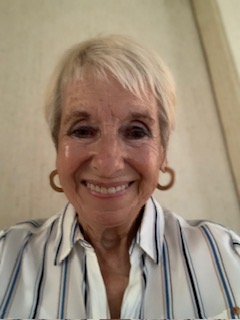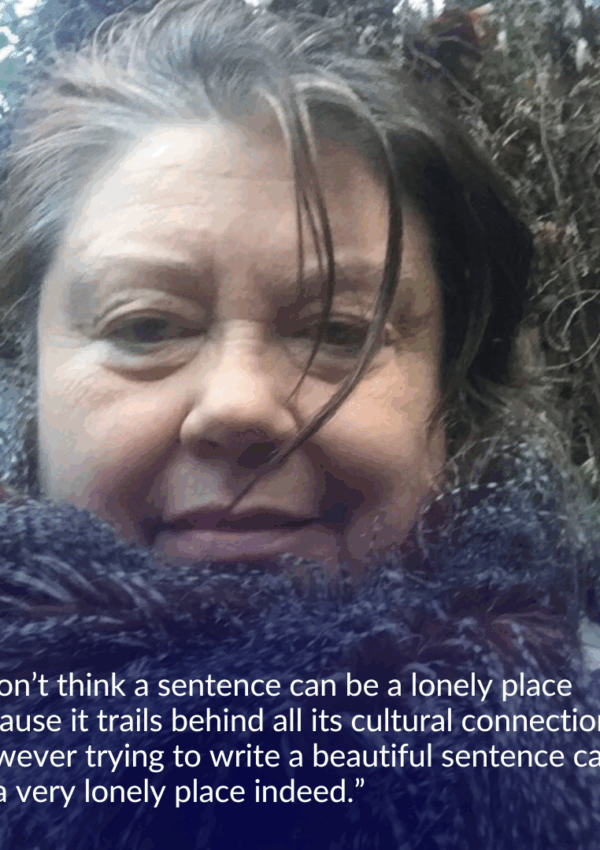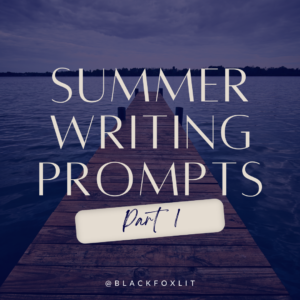Clipboards? Those remnants of the writer’s Stone Tablet Age? In this explosive Age of iPads, tablets, laptops, endlessly propagating apps, smart watches that make your coffee, and GPS trackers that pin down your editor in the Hamptons and remind her to respond to your latest email?
Whatever your writing genre or specialty, you’re probably wired, with at least a laptop and daily upgrade cravings. And you can be connected anywhere. In the ATM line on your iPad, you can visit rival banks for their latest lowest check-cashing charges. With the mall’s free Wi-Fi, in a department store you can see which coupons match that classy shirt. Under a tree in the park, you can sit cross-legged, laptop in your lap, saving paper to boot (or reboot).
Clipboard Conveniences
So, how can a clipboard possibly supplant such tech-orgiastic wonders? I’ve got a few examples. At the electronic emporium, while my husband valiantly tries to understand the grade-school electro-wizard’s explanation of the latest generation of gargantuan gigabytes, I find a corner by the stockroom and sit on a carton of hard drives. At the pull of a pen top, my clipboard is booted up and ready to roll to the next scene in my current short story.
On camping trips, while my husband gets his elbows smacked by the preprogrammed, surefire guaranteed-to-open tent poles, I curl into a canvas chair, a thermos of faux cappuccino propped at my knee. With the clipboard cozily in my lap, I survey the lush forest and settle into the setting of my novel’s next chapter. At the car repair shop, when my husband’s eyes pop at the mechanic’s dazzling estimate-upping electronic diagnostic panel, I commandeer a chair in the waiting area with a bag of pretzels from the vending machine. Not needing to find an outlet for any threatening low iPad power, I flip open my clipboard to my latest poem.
Versatility
Wherever I travel, my clipboard fits easily into a tote, with no need for batteries, memory cards, cables, adapters, chargers, plugs, backup disks, motherboards, skateboards, kiddy boards, or chairman boards. The clipboard automatically accompanies me to the coffee shop, library, restaurant, and park. It’s with me on the subway, the Sunday drive to relatives’, and the eternal supermarket line.
My clipboard also immunizes me from electronic anxiety disorder. I harbor no looming fears of crashing hard drives, suffer no spiraling panic at power spikes, dread no contagion of file-chomping viruses, or blanch at hackers’ abrupt attacks. My clipboard never displays puzzling sluggishness, sudden dips in energy, or heart-stopping flutters, gasps, buzzes, dings, or crackles.
Granted, handwriting has its drawbacks. It doesn’t store your body of work, rough as it may be, for later major surgery. It doesn’t show off sixty-five alternatives for the precise word that maddeningly eludes you. And it doesn’t cut, paste, delete, or redo your revisions with mind-boggling speed.
Defending the Clipboard
Nevertheless, I am a champion of the clipboard. For one thing, arriving at the right word isn’t like choosing from a Chinese restaurant menu. Often you must stop, probe deep inside, and ask yourself pointed questions (“How would she really feel?”). Only as you quiet down and listen do you finally allow the right word to emerge from your private internal database.
For another, sometimes speed is the last thing you want. You need to sit, stare, ruminate, groan a little, and chew on the pen top. At your computer you can sit and stare, but how can you chew on a keyboard, and who wants to chew on a mouse?
When you use a clipboard, much of the pleasure springs from the sheer physical act of forming the letters. As I write, watching the words become real on paper, the process, like drawing, carries irreplaceable sensuality. Surprisingly too, the act of writing is strangely calming and meditative.
The pens alone provide no small part of the pleasure. My favorites are felt-tipped, always stashed in my tote in a delicious assortment of colors, like freshly showered fruits at the outdoor market. In comparison, sterile typewriter keys, soundless and fleet as they may be, feel like aged Vermont replaced by canned spray cheese.
Handwriting’s Physicality
Lest you think I’m the only throwback to the AnteDell-uvian Age, I’m not alone in my praise of handwriting. Writing guru Natalie Goldberg in her classic Writing Down the Bones (1986, Shambhala) declares:
Writing is physical and is affected by the equipment you use. In typing, your fingers hit keys and the result is block, black letters. Handwriting is more connected to the movement of the heart…You are physically engaged with the pen, and your hand, connected to your arm, is pouring out the record of your senses. (pp. 6, 7, 50)
The poet Charles Simic in The New York Review of Books corroborates: “Even a scrap of paper and a stub of a pencil are more preferable for philosophizing than typing the same words down, since writing a word out, letter by letter, is a more self-conscious process and one more likely to inspire further revisions and elaborations of that thought” (“Take Care of Your Little Notebook,” October 12, 2011, lines 30-34).
This sensitivity is also recognized by creativity expert Julia Cameron in The Artist’s Way (1992, Tarcher). In her practical and heady book, Cameron helps us break through blocks and self-censoring by prescribing the “morning pages . . . three pages of longhand writing” daily (p. 9). When one attempts to “cheat” with a word processor or computer, as Cameron herself admits she tried for years, the pages don’t reach the same depth, honesty, or level of self-awareness.
The visceral connection is at the core of creativity. My morning pages, which I did for several years, often produced startling results. Many entries which started out as whining catharsis ended up as essays, stories, and, in three cases, children’s book manuscripts. Multi-award-winning mystery writer Phyllis A. Whitney, who published her last book at ninety-three, agrees: “I believe there’s a connection between the brain and the fingers, and there should be as little interference between the two as possible” (“Tools of the Writer’s Trade,” The Writer, August 1992, p. 29).
Scientific Support
Even science concurs. Reading expert Anne Mangen and neurophysiologist Jean-Luc Velay did a study with tenth-grade children on reading and writing by hand and computer screens. More children learned better with handwritten materials than by computer (“Digitizing literacy: Reflections on the haptics of writing,” Advances in Haptics, 1(3), pp. 86-401). Research conducted by Velay and colleagues shows that handwriting activates parts of the brain keyboard typing does not (Arfinn Christensen, “Paper Beats Computer Screens,” ScienceNordic, March 13, 2013).
Expert handwriting analyst Dr. Marc Seifer points out how many ways handwriting helps our brains. It calms us, it aligns our right and left brains, enhances our cognitive skills, primes our creativity, sharpens our minds as we age, improves our memories, and uses more of our brain (Johana Desta, “7 Ways Writing by Hand Can Save Your Brain,” Mashable, 19, 2015).
And one day recently, clicking the remote for escapist television shows (everyone needs a break), I stopped at the screen: on a little-known station, I sat fascinated as a pen scrolled painstakingly on a thick horizontal line like a school notebook—cursive handwriting!
More than enough reasons to handwrite.
Our Primordial Desire
You may be surprised to learn that our handwriting impetus has prehistoric roots. Poet, novelist, and writing teacher Steven Taylor Goldsberry fills us in: “Compose with pen and paper…The impulse to dirty our hands must hearken back to the dawn of man, when Paleolithic artists crunched charcoal into water and applied it to the surface of flat rock. We have an ancestral, even spiritual, desire to create by hand” (The Writer’s Book of Wisdom, p. 41). Goldsberry too disdains electronic aid with the argument from etymology. “Look at the word manuscript. [In Latin] . . . manu means by hand; scriptus means written” (p. 41).
A Grudging Nod to Technology
Despite these paeans, though, I cannot deny the merits of today’s technological marvels. Handwriting addict though I am, I must admit to using the computer for after-first drafts. Many writers have successfully navigated the fearsome ocean from the safe harbor of pen and paper to the wilds of unknown electronic shores. Both, I’ve found, have their place in creativity’s fickle waters. Nevertheless, my devotion to clipboards remains steadfast, for all the reasons above and more.
The visceral connection is undeniable. When I’ve finally settled down with my clipboard, and the writing flows from heart-mind to arm to fingers to pen to page, I sigh. And I feel fuller than kissing my niece’s infant or diving into a dripping hot fudge sundae.
Other Clipboard Devotees
Perhaps part of a fast-vanishing breed, I’m still in excellent company. Who else writes or wrote with clipboards, or at least by hand, often on stalwart, reliable yellow pads? The distinctive roster sparks confidence. To name only a few: Maya Angelou, Truman Capote, Jackie Collins, Andre Dubus III, Ernest Hemingway, Toni Morrison, Joyce Carol Oates, J. K. Rowling, William Styron, Quentin Tarantino, and Tom Wolfe.
Courage!
So, if you’re a closet clipboardholic and find yourself gaped at, giggled at, pointed to with derision, avoided by other writers, or feeling inexplicably guilty in our tech-hyped, post-cursive era, remember that you belong to a proud elite. Ride out the ridicule, stand tall, look ‘em in the webcam, flourish your pen, and celebrate your clipboard.

A lifelong writer, Noelle Sterne is also a mainstream and academic editor, writing coach, and spiritual counselor, with many articles, stories, and poems in writing, literary, spiritual, and academic venues and two monthly columns. Eons ago, she published a children’s book of original dinosaur riddles, Tyrannosaurus Wrecks (HarperCollins), in print for 18 years and featured on PBS’s Reading Rainbow. More recently, in her professional editing and coaching practice (PhD, Columbia University), she mentors graduate students yearning to complete their dissertations. Hery handbook, Challenges in Writing Your Dissertation: Coping with the Emotional, Interpersonal, and Spiritual Struggles, was published by Rowman & Littlefield (2015). In her spiritual self-help book Trust Your Life: Forgive Yourself and Go After Your Dreams (Unity Books, 2011), Noelle helps readers reach their lifelong yearnings. Pursuing her own dreams, she continues to write, especially with her clipboard. Website:https://www.trustyourlifenow.com




Thank you for this inspirational message re writing out literary creations by hand first. I’ve always been a proponent of head-to-hand-to-pen-to-paper vs keyboarding. I, however, use journals instead of a clipboard. I am a fan of second-hand stores, and can always find passed along, never-used journals for only a dollar at the thrift shop in my neighborhood. So cheers to us courageous ones who find joy in the organic flow of “writing it out!” 😀